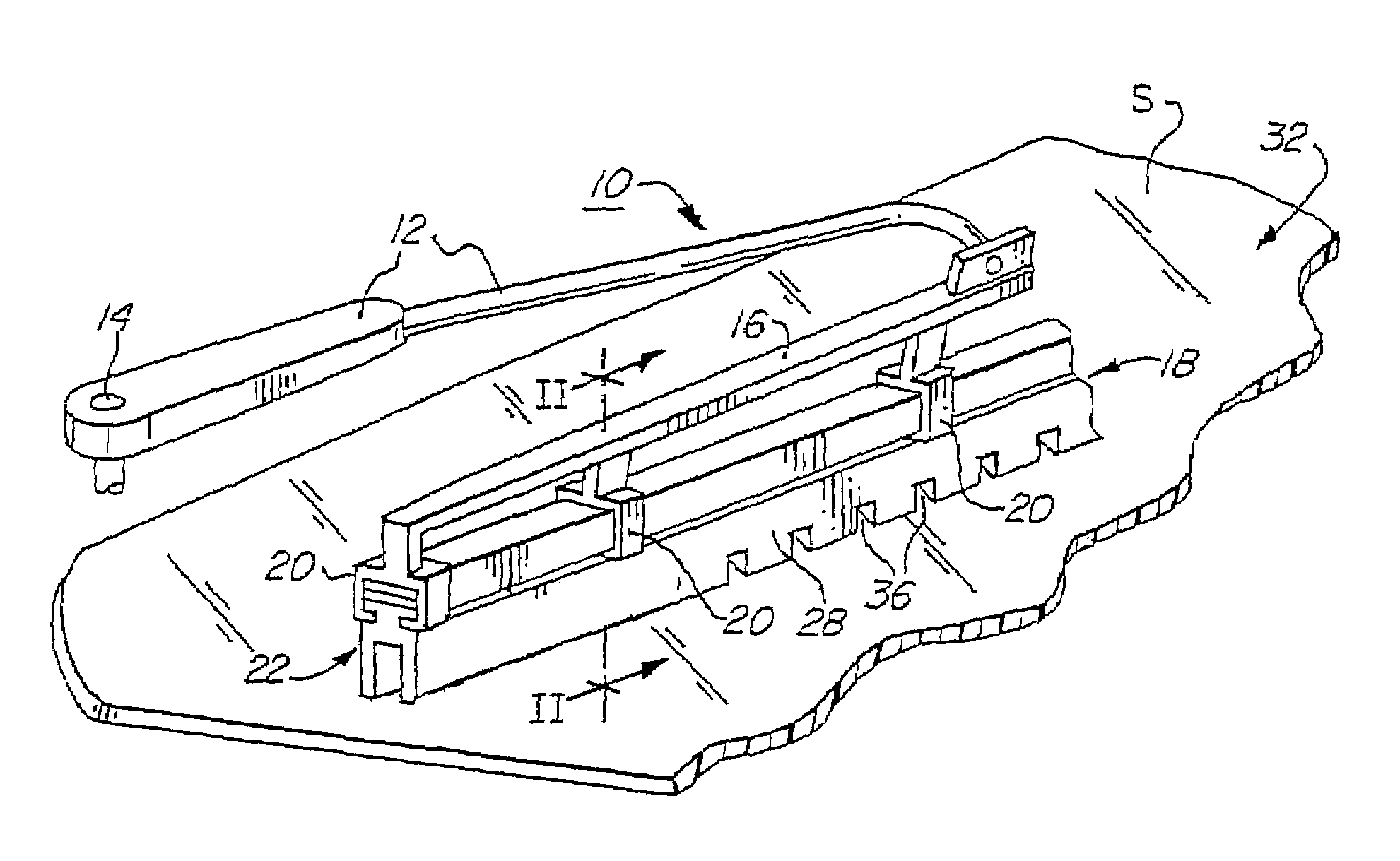Water-diverting windshield wiper blades
a wiper blade and windshield wiper technology, applied in the field of reciprocating wipers, can solve the problems of reducing visibility, driver or pilot side, and consequently significant visibility reduction, and achieve the effect of increasing the efficiency of liquid removal by the wiper
- Summary
- Abstract
- Description
- Claims
- Application Information
AI Technical Summary
Benefits of technology
Problems solved by technology
Method used
Image
Examples
Embodiment Construction
[0039]For economy of expression, reference is made below to water as the liquid and to a vehicle windshield as providing the surface which is wiped by the blades of the wiper.
[0040]Referring now to FIG. 1, a windshield wiper assembly is generally indicated at 10 and comprises an arm 12, one end of which is mounted on a support head 14, which is a standard item on motor vehicles, and rotates in alternate opposite directions to traverse bridge arm 16 on which is carried a wiper fixture 18. Wiper fixture 18 is carried on bridge arm 16 by a series of clips 20 which retain a wiper 22 which is wiped across the exterior surface S of wind-shield 32.
[0041]Referring now to FIG. 2, wiper 22 has a central portion 24 which is connected by neck 24a to head 24b, a first blade 26 and a second blade 28. Neck 24a is formed by a pair of opposite grooves (unnumbered) within which are received opposite arms 20a, 20b of a plurality of clips 20. Clips 20 may be made of any suitable material, such as alumi...
PUM
 Login to View More
Login to View More Abstract
Description
Claims
Application Information
 Login to View More
Login to View More - R&D
- Intellectual Property
- Life Sciences
- Materials
- Tech Scout
- Unparalleled Data Quality
- Higher Quality Content
- 60% Fewer Hallucinations
Browse by: Latest US Patents, China's latest patents, Technical Efficacy Thesaurus, Application Domain, Technology Topic, Popular Technical Reports.
© 2025 PatSnap. All rights reserved.Legal|Privacy policy|Modern Slavery Act Transparency Statement|Sitemap|About US| Contact US: help@patsnap.com



